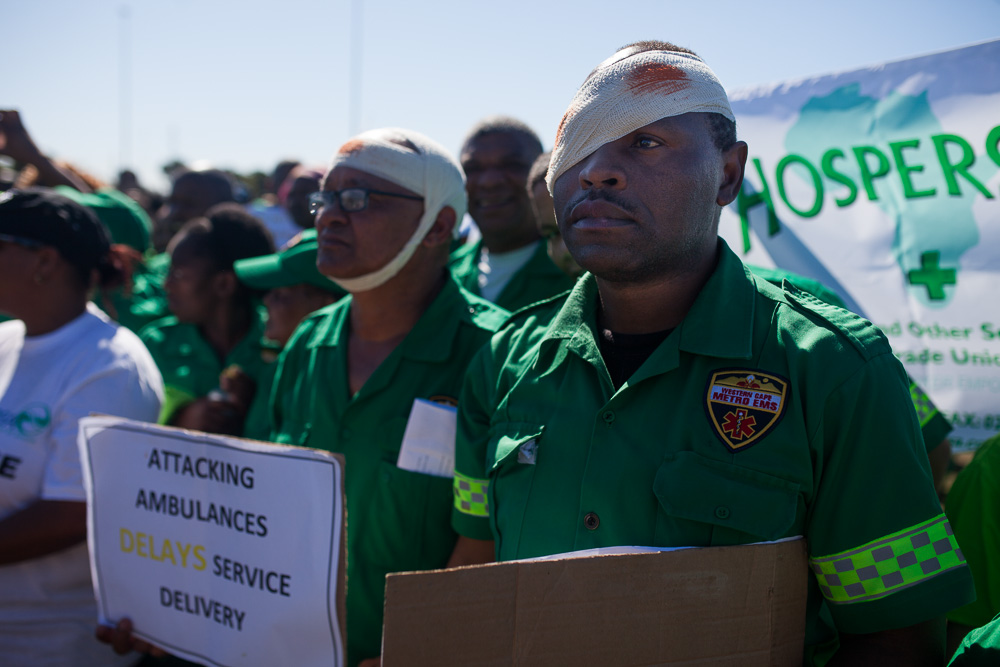Being an emergency medical worker is still one of the most dangerous jobs in Cape Town, as paramedics are under attack from robbers and gang violence, some armed with weapons. The Western Cape’s “red-zone” areas, where ambulance crews are often attacked, have now increased to 15. Emergency personnel have to wait for a police escort, and only then can they respond to calls for assistance.
The lives of those living in the most dangerous areas are at risk because it takes paramedics an average of two hours to reach a patient in an emergency situation in a “red zone” community. According to reports, between 2012 and 2016, approximately 231 paramedics were attacked on the Cape Flats. These attacks have directly affected the ability of EMS (Emergency Medical Services) staff to do their jobs.
Speaking to VOC, Emergency Medical Services Chief Pumzile Papu said they have recorded 32 attacks this year alone.
“If you compare the number of attacks last year there has been a decrease but however we always say one attack is too many, we are not supposed to be attacked full stop,” said Papu.
The “red zones” include Browns Farm in Philippi, Tafelsig, Hyden Park, Nyanga, Gugulethu, New Crossroads, Manenberg, Hanover Park, Kalksteenfontein, Site C in Khayelitsha , J-Section in Lingelethu West, Beacon Valley, Rocklands, Heideveld and Chicago in Paarl.
Papu explained the criteria for a ‘red zone’.
“If the community is going to have a march, some of these marches tend to be violent and we rely on the police intelligence, we will then declare that area a red zone just for that period… but once the march is finished we undeclare it.”
“The second one is when gangsters are fighting. That is also information that we rely on SAPS for so we can declare that area a red zone but not indefinitely,” explained Papu.
“The third one is when we get attacked on scene either by the relatives or by communities then we mark those areas a red zone. Once we mark it a red zone it is not easy for us to say it is no longer a red zone.”
“The fourth one is when there are personal attacks. When we are being robbed by people that pass by and once that happens we declare the area a red zone.”
However, in analysing the motivating factors as to why certain areas are more prone to attacks against emergency personnel, Papu said it was complex.
“The problem that makes things difficult is that you are not even sure whether people who have attacked you are even from that area. For example we were attacked in Heideveld but the people that robbed us were from Manenberg. So we need to look at those things before declaring a red zone.”
“We have areas that we regard a no go zone. If the SAPS is afraid to in a particular area, there is no way I am going to allow myself to go in that area. We will do everything in our power to protect our staff, so we are not going to wait till something worse happens before we can take drastic action.”
Papu also explained the necessary steps the EMS has to take when getting a call from a red zone community and later explained why they are becoming easy targets.
“The first thing that we do when we receive a call from a red zone, is that we immediately inform the caller that there might be delays because the ambulance needs to first go to the SAPS to get escorted to the scene. Number two is while we get that escort, we then phone the caller again to say we are now on our way and to ensure the patient is ready.
“One thing that we have noticed this year, attacks are a bit different because the communities are aware and we have sensitized them. But what have not decreased are the robberies. People want to attack us because we are soft hearted. Unfortunately we have even been attacked under police escorts,” said Papu
He also explained some interventions the EMS is looking to achieve in order to reduce the number of red zone communities.
“We will be having a workshop next month because there are areas that are red zones but it has been quiet now. We need to sit down and reduce those numbers and declare those areas as not red zones. In Gugulethu, we are starting a project being assisted by the second year students from CPUT [Cape Peninsula University of Technology] to say yes we have areas that are red zoned but how do we make sure the scene is safe. We are being robbed on the scene not necessary when we are on our way to the scene,”
“We need to sit down with neighbourhood watches and once they [the neighbourhood watch] are credited we will be able to utilise them and communicate with them. It will help us for two reasons. One they will make sure the area is safe. Number two is they will be able to say yes these people do need an ambulance.” VOC






 WhatsApp us
WhatsApp us 

